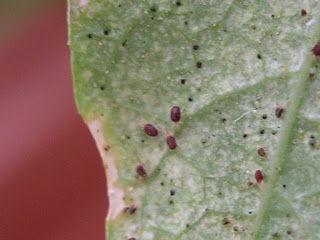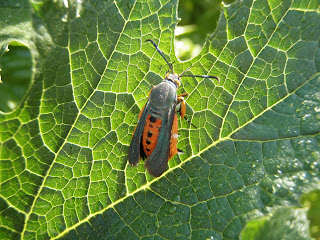With the holidays coming up, I thought I would pull up some gift ideas that have caught my fancy. I'm sure that y'all don't have too many bug-lovers on your gifting list, but in case you do, here are some ideas.
 |
| Bee nose ring by Rock Your Nose Jewelry. |
First up is a sterling silver bee nose ring because, c'mon....who wouldn't want a bee in their nose? I have some bee earrings, but I may need to consider getting my nose pierced now just so I can really show off my love of insects with this. Nose ring sold by Rock Your Nose Jewelry on Etsy.
 |
| Beekeeper face jug by Grafton Pottery. |
 |
| 3-D printed beetle bracelet by Paralogical. |
Next up we have a 3-D printed beetle bracelet by paralogical that you can find and purchase on shapeways.com. This is a really cool bracelet not only because of the design, but also because it's 3-D printed. Technology is a wonderful thing sometimes.
 |
| Stick bug bottle by Laura Zindel. |
I saw these ceramic bottles by Laura Zindel on Pintrest and fell in love with them. I just picture a cluster of them on the mantle. There are a bunch of different designs available and she also has plates, platters, butter dishes, tea cups and saucers among other things. There is an ant platter that is wonderfully original.
I could not resist this cockroach backpack although I cannot track down who actually makes it. All I could find is that it's from Japan....somewhere. My husband actually showed this picture to me and I have no idea how he found it. He's not a fan of cockroaches like I am and I can't imagine that he was randomly googling "cockroach" to track down gift ideas for me. This is the same man that said if I come home with a cockroach tattoo that he will step on it (that doesn't mean it won't happen at some point....).
 |
| Backpack Mega- Cockroach....from Japan (somewhere). |
 |
| Hand drawn insect decorations by The Old Laundrette. |
Perfect for decorating a insect themed Christmas tree are these hand drawn decorations found on Etsy by TheOldLaundrette. I find these very charming...very retro and remind me of old bookplates.
 |
| Vintage boot remover. |
Do you have trouble removing your gardening boots before you come inside the house? This may be just what you are looking for. This is a vintage boot remover that is an insect. Not only is it useful, but it also is decorative and looks much nicer than most boot removers that I have seen. This is for sale on Etsy from Brass Attics.
 |
| Tang butterfly vase by Carol Long Pottery. |
The last one, is certainly not the least as it is extremely beautiful. It's another piece of pottery, but this one is by Carol Long. It's a Tang Butterfly Vase and it is AH-MA-ZING! Look at the gorgeous curves! I love this design.




























